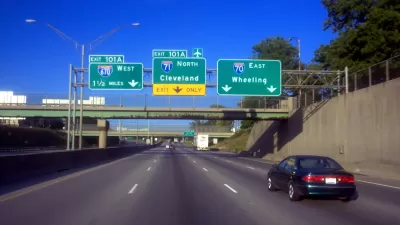Canada's new federal budget allocates $500 million for public transit and makes a "permanent" commitment to allocating a portion of the gas tax to municipalities for infrastructure-related spending. But is it enough?
"Many municipalities and transit associations applauded the Conservative government's $500-million boost for public transit in Tuesday's budget, calling the extra money a pleasant surprise.
The funds are set aside for construction-ready public transit projects, meaning initiatives either already announced or where municipal commitments were to be made by the end of March.
Projects allotted money include:
* The Evergreen Light Rapid Transit System in Vancouver.
* The re-establishment of a rail link between Peterborough, Ont., and Union Station in Toronto.
* New equipment and upgrades to dedicated rapid transit routes for the Aéroports de Montréal.
[As well, the] gas tax transfers to municipalities will be made permanent past 2014. The fund, introduced in 2004, provides municipalities with a portion of federal gas tax revenues that they can use on public transit, water and wastewater infrastructure and local roads.
But Calgary Mayor Dave Bronconnier said he wished more money had been provided.
'Big city mayors, we've been calling for $2 billion annually and what have they come up with? $500 million. Significantly short of what's required to get the job done.'
Vancouver's light rapid transit system is expected to cost billions, but it will only get about $66 million from the federal government."
FULL STORY: Cities, transit groups praise budget

Alabama: Trump Terminates Settlements for Black Communities Harmed By Raw Sewage
Trump deemed the landmark civil rights agreement “illegal DEI and environmental justice policy.”

Planetizen Federal Action Tracker
A weekly monitor of how Trump’s orders and actions are impacting planners and planning in America.

The 120 Year Old Tiny Home Villages That Sheltered San Francisco’s Earthquake Refugees
More than a century ago, San Francisco mobilized to house thousands of residents displaced by the 1906 earthquake. Could their strategy offer a model for the present?

Indy Neighborhood Group Builds Temporary Multi-Use Path
Community members, aided in part by funding from the city, repurposed a vehicle lane to create a protected bike and pedestrian path for the summer season.

Congestion Pricing Drops Holland Tunnel Delays by 65 Percent
New York City’s contentious tolling program has yielded improved traffic and roughly $100 million in revenue for the MTA.

In Both Crashes and Crime, Public Transportation is Far Safer than Driving
Contrary to popular assumptions, public transportation has far lower crash and crime rates than automobile travel. For safer communities, improve and encourage transit travel.
Urban Design for Planners 1: Software Tools
This six-course series explores essential urban design concepts using open source software and equips planners with the tools they need to participate fully in the urban design process.
Planning for Universal Design
Learn the tools for implementing Universal Design in planning regulations.
Clanton & Associates, Inc.
Jessamine County Fiscal Court
Institute for Housing and Urban Development Studies (IHS)
City of Grandview
Harvard GSD Executive Education
Toledo-Lucas County Plan Commissions
Salt Lake City
NYU Wagner Graduate School of Public Service





























